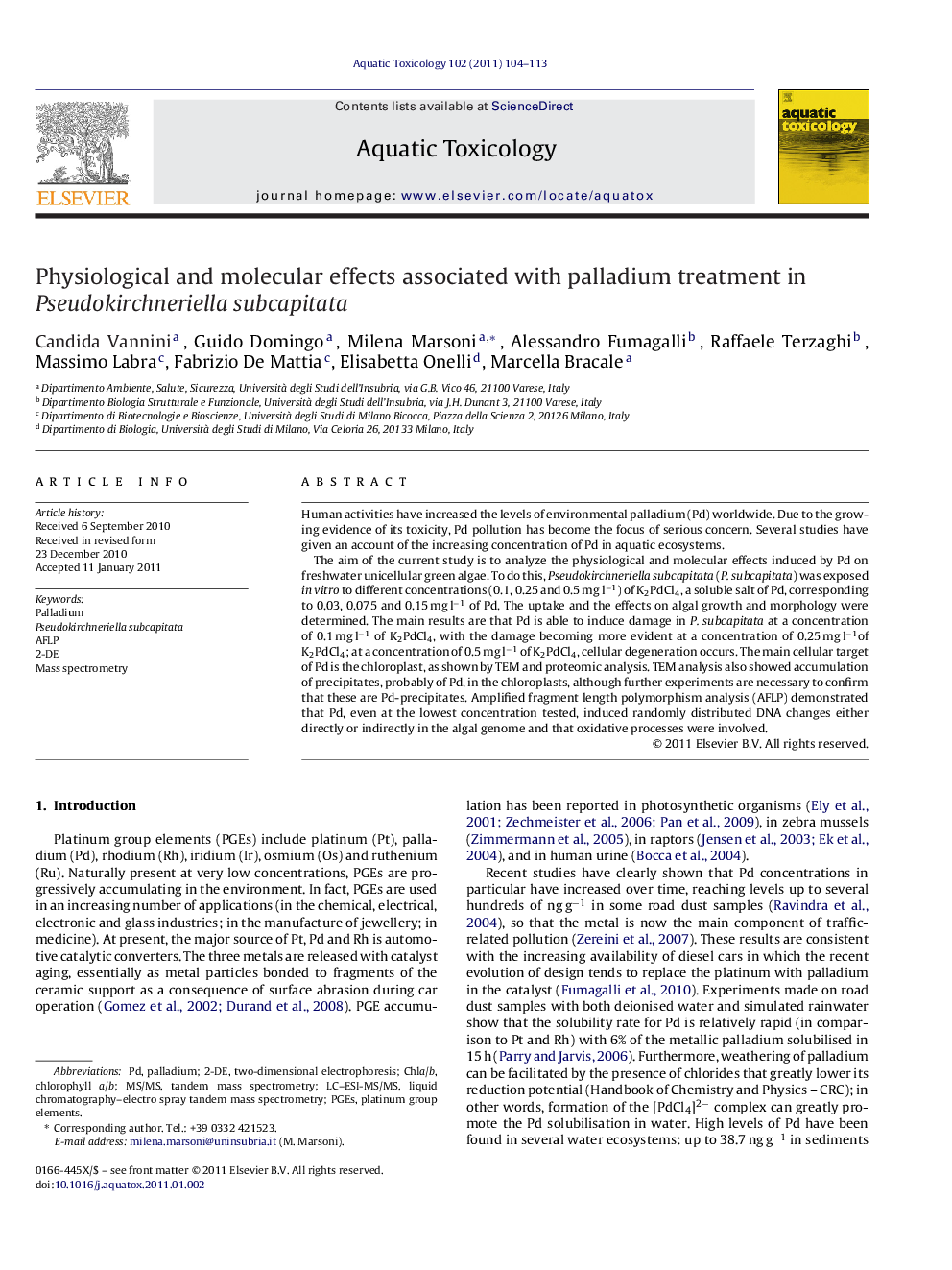| Article ID | Journal | Published Year | Pages | File Type |
|---|---|---|---|---|
| 4529961 | Aquatic Toxicology | 2011 | 10 Pages |
Human activities have increased the levels of environmental palladium (Pd) worldwide. Due to the growing evidence of its toxicity, Pd pollution has become the focus of serious concern. Several studies have given an account of the increasing concentration of Pd in aquatic ecosystems.The aim of the current study is to analyze the physiological and molecular effects induced by Pd on freshwater unicellular green algae. To do this, Pseudokirchneriella subcapitata (P. subcapitata) was exposed in vitro to different concentrations (0.1, 0.25 and 0.5 mg l−1) of K2PdCl4, a soluble salt of Pd, corresponding to 0.03, 0.075 and 0.15 mg l−1 of Pd. The uptake and the effects on algal growth and morphology were determined. The main results are that Pd is able to induce damage in P. subcapitata at a concentration of 0.1 mg l−1 of K2PdCl4, with the damage becoming more evident at a concentration of 0.25 mg l−1of K2PdCl4; at a concentration of 0.5 mg l−1 of K2PdCl4, cellular degeneration occurs. The main cellular target of Pd is the chloroplast, as shown by TEM and proteomic analysis. TEM analysis also showed accumulation of precipitates, probably of Pd, in the chloroplasts, although further experiments are necessary to confirm that these are Pd-precipitates. Amplified fragment length polymorphism analysis (AFLP) demonstrated that Pd, even at the lowest concentration tested, induced randomly distributed DNA changes either directly or indirectly in the algal genome and that oxidative processes were involved.
